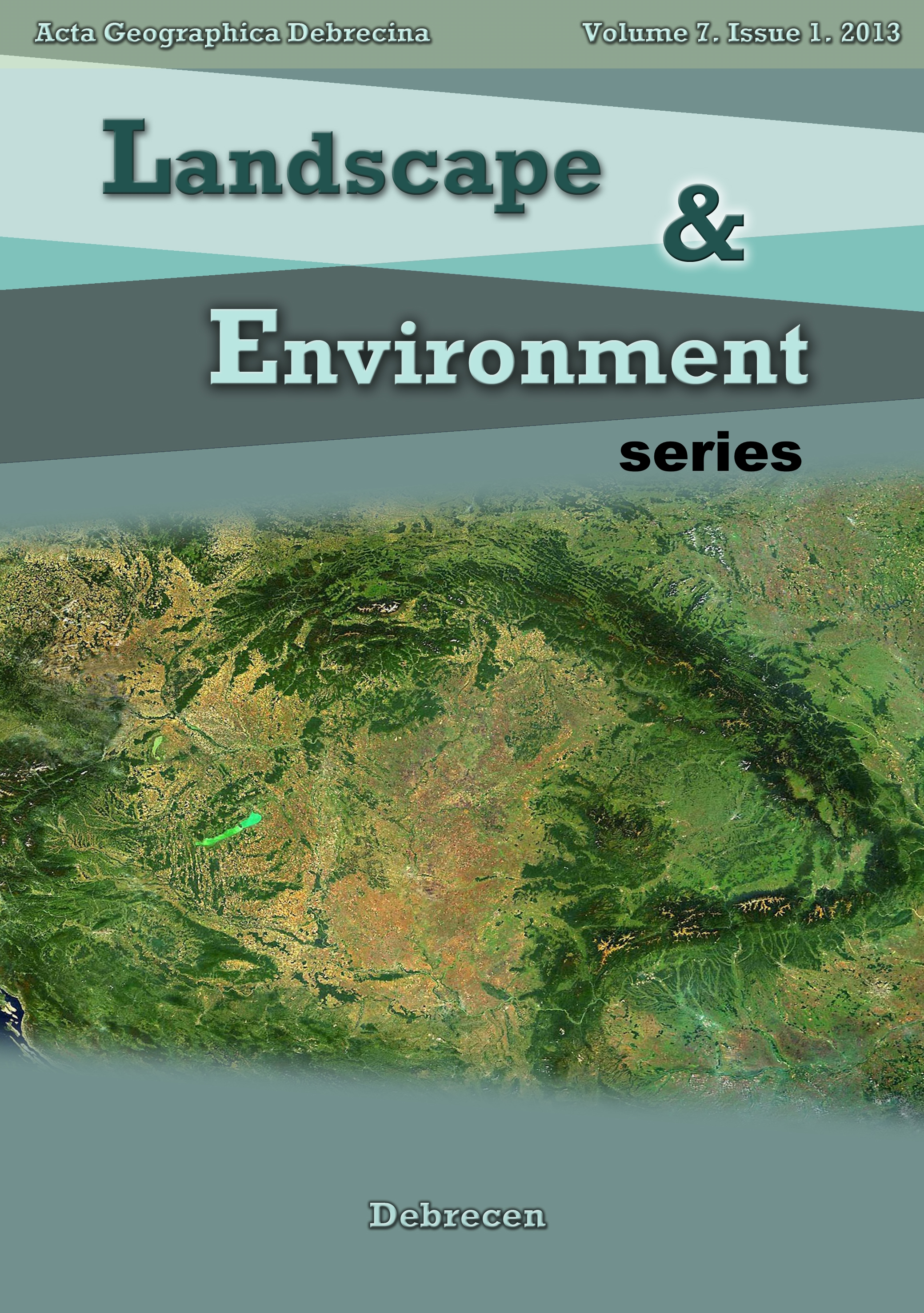Vol. 7 No. 1 (2013)
Faith, J. Wind damage on trees following hurricane Sandy and implications for city landscaping: Glen Ridge - Montclair towns, New Jersey
Mihai, F. C. Development of MSW collection service on regional scale: spatial analysis and urban disparities in North-Easr Region, Romania
Molnár, Zs. Types and characteristics of the oxbow-lakes in Lower-Tisza-valley - classification from landscape planning perspective
Joseph, P. Mount Pele, an ecoclimatic gradient generator
##issue.tableOfContents##
Articles
-
Wind damage on trees following hurricane Sandy and implications for city landscaping: Glen Ridge - Montclair towns, New Jersey
1-11Views:145Glen Ridge is a small municipality in the Northern New Jersey with a significant number of huge trees lining majority of its streets. The trees have been subject to a wide range of natural and artificial stresses, one being the strong wind associated with superstorm Sandy. On 29th October 2012, a windstorm of extreme intensity struck the Tristate region and brought havoc to the tree population including those in Glen Ridge. A survey was conducted immediately after the storm to collect quantitative information on fallen tree population. The study aimed at understanding the spatial extent of wind damage on trees with reference to location, trunk diameter and soil characteristics. A total of 51 fallen trees with a mean trunk diameter of 100.4 centimetres along streets in study area were surveyed. High damage was noted on trees in Glen Ridge (29 trees) while streets transitioning to Montclair had 22 fallen trees. Majority of the surveyed trees were found on USBOO soils (49%), which are characterised as disturbed urban soils with Boonton substratum-Boonton complexes. BowrB soils had 27.5%, Boob 13.7%, BowrC 7.8% and USDUNB 2.0% of fallen trees. A need for city wide tree inventorying and species mapping is identified as a management implication to further enhance the historical value of the city. Other measures are discussed with a view of engaging appropriate local management partnerships and coordination frameworks to play a role in protecting the remaining large trees.
pdf92 -
Development of MSW collection service on regional scale: spatial analysis and urban disparities in North-Easr Region, Romania
13-18Views:87The cities are facing illegal dumping of municipal solid waste (MSW) because the waste collection facilities do not cover the entire population. Furthermore, this sector is poorly developed in small towns or villages annexed to administrative territory units (ATU) of cities , MSW are disposed in open dumps polluting the local environment. This paper analyzes on the one hand the urban disparities on public access to waste collection services (WCS) in the North-East Region on the other hand, it performs a comparative analysis between 2003 and 2010 outlining the changes made in the context of Romania’s accession to EU. Also, it performs a quantitative assessment method of uncollected waste at urban level and correlated to demographic features of each city. Spatial-temporal analysis of waste indicators using thematic cartography or GIS techniques should be a basic tool for environmental monitoring or assessment of projects from this field in every development region (NUTS 2). The EU acquis requires the closure of noncompliant landfills, the extension of waste collection services, the development of facilities for separate collection, recycling and reuse according to waste hierarchy concept. Full coverage of urban population to waste collection services is necessary to provide a proper management of this sector. Urban disparities between counties and within counties highlights that current traditional waste management system is an environmental threat at local and regional scale.
pdf68 -
Types and characteristics of the oxbow-lakes in Lower-Tisza-valley - classification from landscape planning perspective
19-25Views:116The study area is located in Hungary on the South of the Great Plane called Alföld in Hungarian. There are ten oxbow lakes are located in the region of the Lower Tisza Valley. The quality of the area’s oxbow lakes are rather different. There are protected, highly valuable sites in terms of landscape and nature conservation, yet degraded areas utilized for economic purposes can also be found. In the course of river-control in the Lower Tisza Valley was affected by the 84-90th cutoffs, therefore oxbows have been formed in the area. Four of these oxbows are on the part that is not effected by floods, and six of them are located in the active floodplain.The attributes or usage of oxbow lakes allow for a complex system of categorisation. The assessment and classification of oxbow lakes can establish the grounds for assessment, as well as for planning the interventions of landscape restoration.
pdf152 -
Mount Pele, an ecoclimatic gradient generator
27-41Views:146Generally, mountains determine the characteristics of particular areas, because of the island phenomenon they cause. However, the geological origins of mountains are multiple and they are located in different climatic regions. Nevertheless, in all aspects they reflect the basic elements of the local biologic unit. The shapes, climates, diverse water resources, biocenoses and the generated soils are the different components that determine, through their dynamic interaction, the “Mountain” ecosystem. Tectonic subduction processes lead to the development of islands such as Martinique, whose basic structure consists of a series of mountains (among them Mount Pele). Like the topographic divisions, the local micro-climates, water courses, different soils (themselves the consequences of the presence of the mountain itself) and successive volcanic eruptions determine, over time, the organization of the diverse vegetal entities.
pdf143
